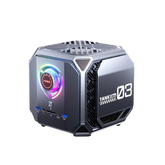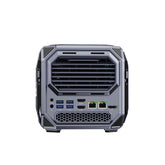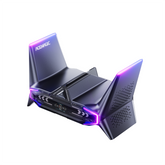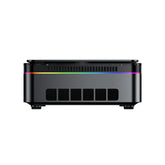In-Depth Analysis of Intel N95: A Cost-Effective Choice with Adequate Performance

As computing technology continues to advance, the market offers a wide variety of processors, ranging from high-performance flagship products to entry-level chips with excellent value for money. Among these options, the Intel N95 processor has garnered attention for its stable performance and affordable pricing. This article provides an in-depth analysis of the Intel N95’s performance and its ideal use cases.
Technical Specifications of the Intel N95
The Intel N95 is a processor based on the Alder Lake-N architecture, utilizing a 10nm process. Its core specifications include:
- Cores/Threads: 4 cores/4 threads
- Base Clock Speed: 3.4 GHz
- Cache: 6MB L3 cache
- Integrated Graphics: Intel UHD Graphics
- Thermal Design Power (TDP): 15W
Unlike high-end processors designed for peak performance, the N95 is aimed at providing a reliable solution for everyday computing tasks.
Real-World Performance
The Intel N95 excels in the following areas:
Daily Office Tasks
The N95 effortlessly handles daily office needs, such as web browsing, document editing, emails, and online meetings. Its 4-core design ensures smooth multitasking, even when running multiple lightweight applications simultaneously.
Multimedia Entertainment
The integrated Intel UHD Graphics supports smooth 4K video decoding, delivering an excellent visual experience for streaming and local video playback. For typical home users, this processor is well-suited for serving as the core of a home entertainment system.
Lightweight Creative Work
While not designed for high-end creative tasks, the N95 can still run lightweight image editing software such as Photoshop or Canva, making it suitable for simple graphic design work.
Gaming Performance
The N95’s integrated graphics are not ideal for running demanding 3D games. However, it can provide acceptable frame rates for classic 2D games or lightweight online titles.
Comparison with Competitors
Among entry-level processors, the Intel N95 stands out for its lower power consumption compared to AMD’s Ryzen 3 series. Its single-thread performance is particularly strong for daily tasks. Furthermore, the N95 shows noticeable improvements in process technology and architectural optimization compared to Intel’s previous generation of low-power processors, offering better energy efficiency.
Remark:
- Intel N95: With lower power consumption and superior single-thread performance, the N95 is ideal for basic tasks and devices that require high energy efficiency. It stands out for battery life or low power demand scenarios.
- AMD Ryzen 3 Series: With stronger overall performance, especially in multi-threaded tasks and graphic processing, the Ryzen 3 series is suited for more demanding applications but consumes more power.
Ideal Use Cases
The Intel N95 is well-suited for the following scenarios:
- Students: Meets the requirements for online learning, document creation, and multimedia study.
- Home Entertainment Centers: Its low power consumption and robust video decoding capabilities make it an excellent choice for building a home theater system.
- Mini PCs: The low-power design is perfect for mini PCs or fanless systems, such as office terminals or home mini servers.
Versatile Options with the ACEMAGIC S1 Mini PC
The ACEMAGIC S1 offers configurations with Intel N95, N97, or N100 processors. This mini PC features LED status indicators and includes:
- Rich Connectivity: Two Gigabit Ethernet ports, two HDMI ports, and four USB ports (two USB 3.0 Type-A and two USB 2.0 Type-A).
- Advanced Connectivity: Supports WiFi 6 and Bluetooth 5.2.
- Thermal Design: Equipped with an active cooling fan.
- Upgradability: Magnetic side panels provide easy access to a single DDR4 SODIMM slot and dual M.2 2280 slots.
Pricing:
ACEMAGIC S1 Intel 12th Alder Lake N95 Mini PC

The ACEMAGIC S1features two Gigabit Ethernet ports, two HDMI ports, four USB ports (two USB 3.0 Type-A and two USB 2.0 Type-A), support for WiFi 6 and Bluetooth 5.2, a fan for active cooling, and easy upgrades thanks to a magnetic side panel that can be removed to access the computer’s single DDR4 SODIMM slot and dual M.2 2280 slots.
- Intel N95/16GB/512GB Configuration: Starting at $159.
- Intel N97/16GB/1TB Configuration: Starting at $198.
- Intel N100/16GB RAM and 1TB SSD Configuration: Up to $241.
Conclusion
In summary, the Intel N95 is a well-positioned processor offering low power consumption, reliable performance, and exceptional value for money, catering to the needs of entry-level users. If you are looking for an affordable processor capable of handling everyday tasks, the Intel N95 is undoubtedly a strong contender. Whether as the core of a home entertainment system or a reliable assistant for daily office work, the N95 delivers a great user experience.
With the versatile configurations available in the ACEMAGIC S1 Mini PC lineup, users can choose the best fit for their specific needs, making it an ideal choice for various applications.






